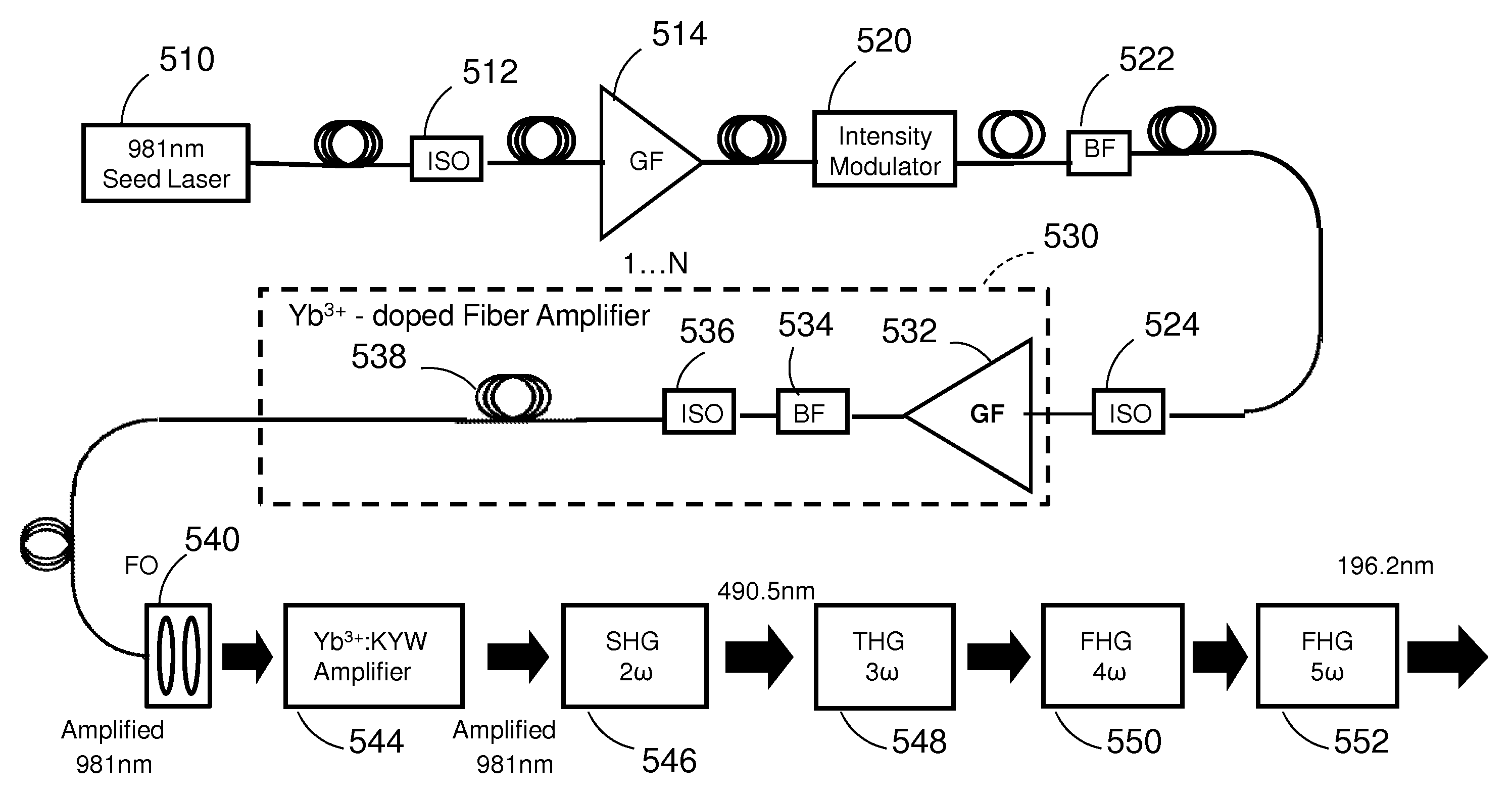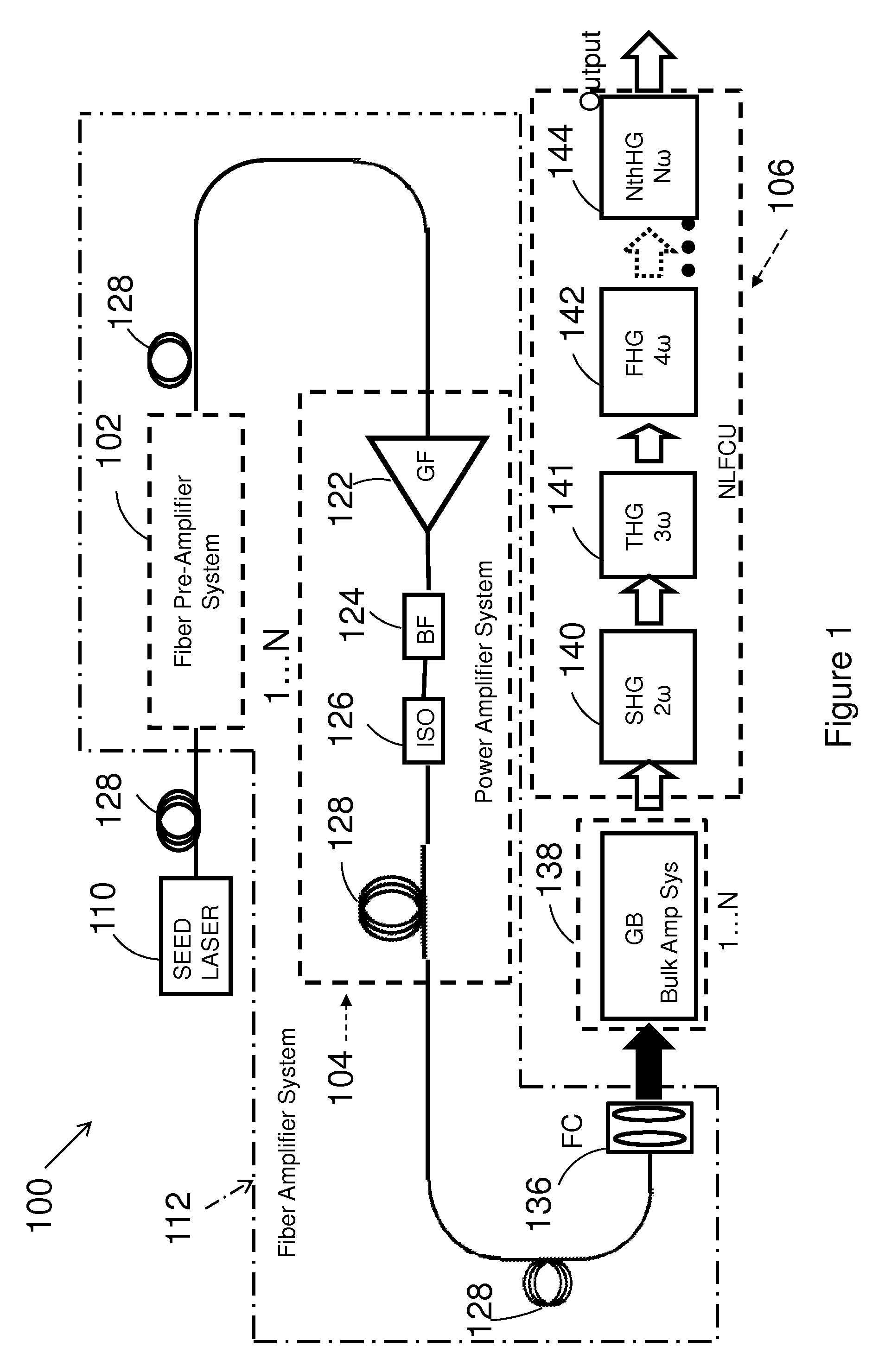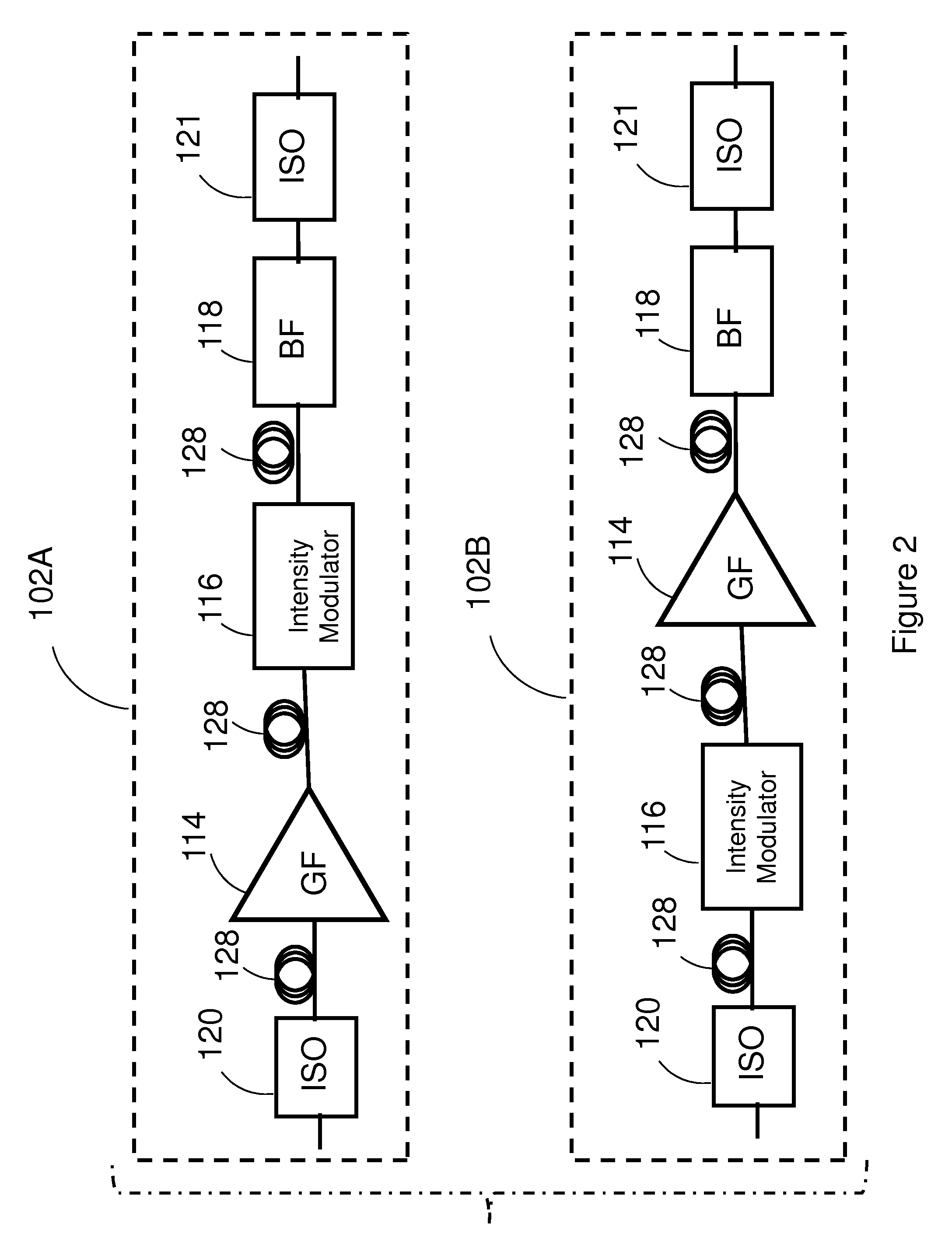Ultraviolet fiber laser system
a fiber laser and ultra-violet technology, applied in the field of fiber lasers, can solve the problems of high ongoing cost of ownership, poor beam quality of high-power excimer lasers, and use of high-voltage electronics, and achieve the effects of reducing laser volume, improving laser efficiency, and controlling pulse repetition ra
- Summary
- Abstract
- Description
- Claims
- Application Information
AI Technical Summary
Benefits of technology
Problems solved by technology
Method used
Image
Examples
second embodiment
[0065]FIG. 4 illustrates a laser system in accordance with the invention that effectively energy scales a 980 nm seed laser 410 by Yd-doped fiber amplifiers. The output of laser 410 may be connected, in series, to a fiber coupled isolator 412 (in addition any optical isolator that may be incorporated into the package of the fiber couple diode laser, i.e., between the diode laser chip and the optical fiber), an acoustic-optical modulator (AOM) 414 which produces optical pulses through intensity modulation, a core or cladding pumped fiber amplifier / pre-amplifier 416 to amplify low power pulses created by AOM 414 to the energy level close to the gain saturation of the booster amplifier 463, a band pass filter 418, and a second isolator 420 to a PM signal and pump combiner 422 (WDM or fused). The DC un-doped fiber of the PM pump and signal combiner 422 may be connected to a DC LMA Yb-doped double clad PM gain fiber 424 having an appropriately chosen length so that it may be coiled and h...
third embodiment
[0069]FIG. 5 illustrates the invention in which a DFB, 100 mW, PM fiber coupled diode laser 510 operating at 981 nm wavelength is used as a CW seed laser for the master oscillator. The 981 nm laser output may be supplied, in series, to an isolator 512, an amplifier / pre-amplifier 514, and an intensity modulator 520 which may comprise a PM fiber coupled small chirp or chirp-free electro-optical Mach-Zhender modulator producing 1 ns pulses at a 1000 Hz pulse repetition rate (PRR) (i.e., a duty cycle of 0.000001). With a 4 dB insertion loss, about 40 nW of the 981 nm light average output power may be obtained from the Mach-Zhender modulator 520. The output from the intensity modulator may be applied to a band pass filter 522, an isolator 524, and to a single or multi stage Yb3+-doped fiber amplifier 530. Elements 532, 534, 536 and 538 may be similar to elements 122, 124, 126 and 128 previously described in connection with FIG. 1. A core-pumped or a cladding pumped Yb-doped fiber amplifi...
fourth embodiment
[0072]In fourth embodiment the invention affords pulse and CW operation of Er fiber lasers based on LMA, DC Er3+-doped gain fibers optically cladding pumped either resonantly into a 1530 nm absorption band or a 976 nm absorption band of Er3+. The gain band of Er3+-doped fibers spans from approximately 1530 nm to over 1600 nm. The approach described above for Yb-doped fiber laser may also be used for laser power scaling with close to diffraction limited laser beam quality when an Er3+-doped LMA fiber is used (with appropriate selection of MO wavelength and spectral properties of all other system components, appropriate for an Er3+ fiber laser). This enables pulse and CW laser operation at virtually any laser line in the 1530-1610 nm spectral range as well as for red and UV operation of these lasers via nonlinear frequency conversion to higher harmonics of their fundamental frequencies.
[0073]FIG. 6 illustrates the fourth embodiment of the invention that has an overall configuration si...
PUM
 Login to View More
Login to View More Abstract
Description
Claims
Application Information
 Login to View More
Login to View More - R&D
- Intellectual Property
- Life Sciences
- Materials
- Tech Scout
- Unparalleled Data Quality
- Higher Quality Content
- 60% Fewer Hallucinations
Browse by: Latest US Patents, China's latest patents, Technical Efficacy Thesaurus, Application Domain, Technology Topic, Popular Technical Reports.
© 2025 PatSnap. All rights reserved.Legal|Privacy policy|Modern Slavery Act Transparency Statement|Sitemap|About US| Contact US: help@patsnap.com



